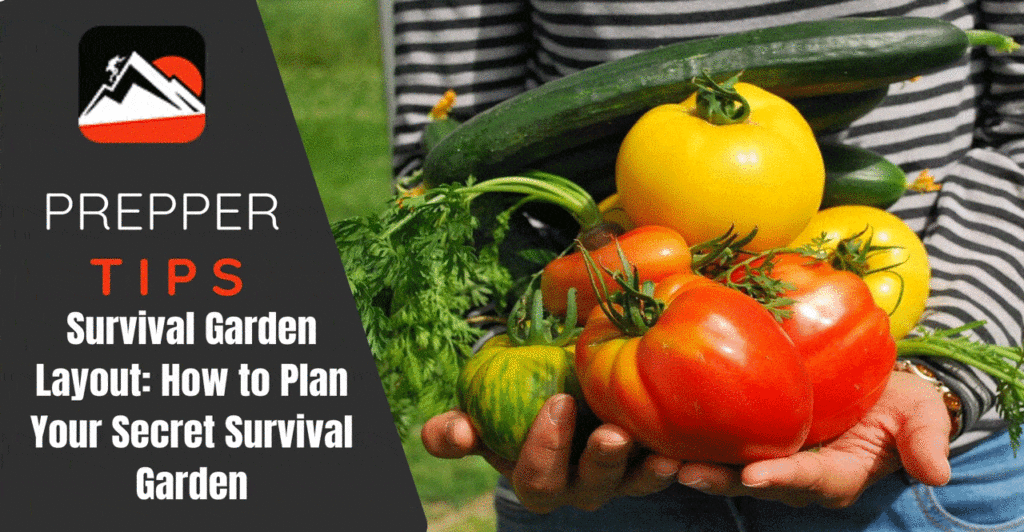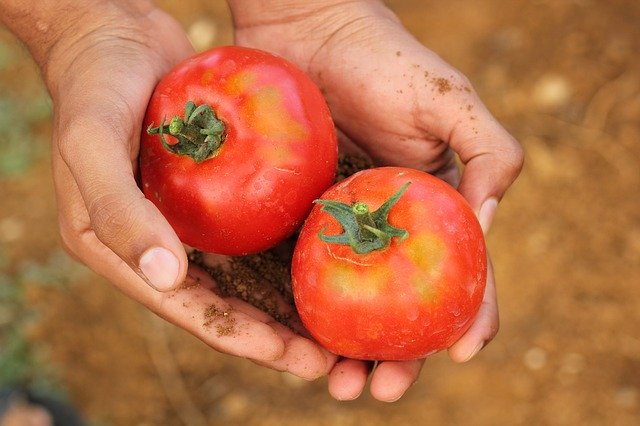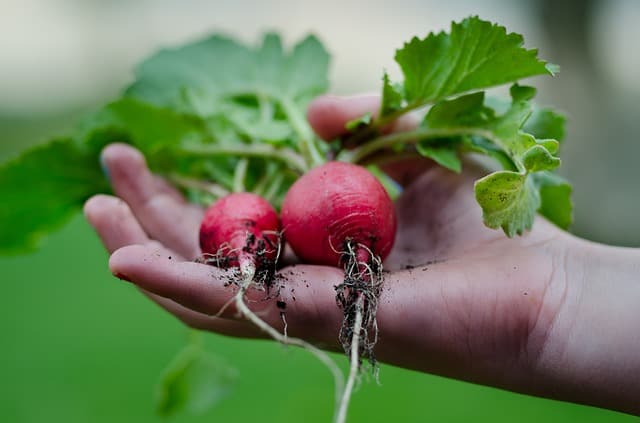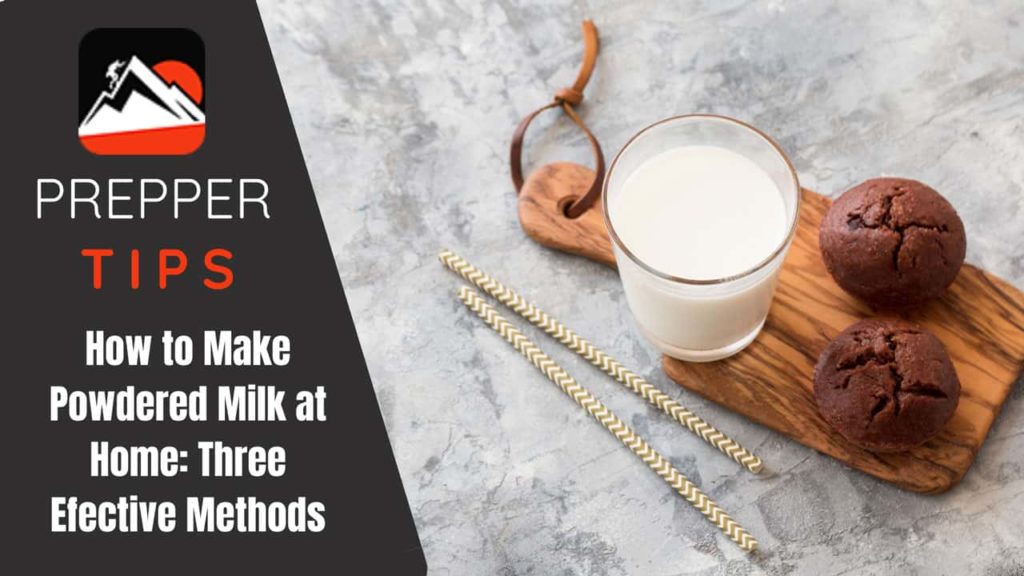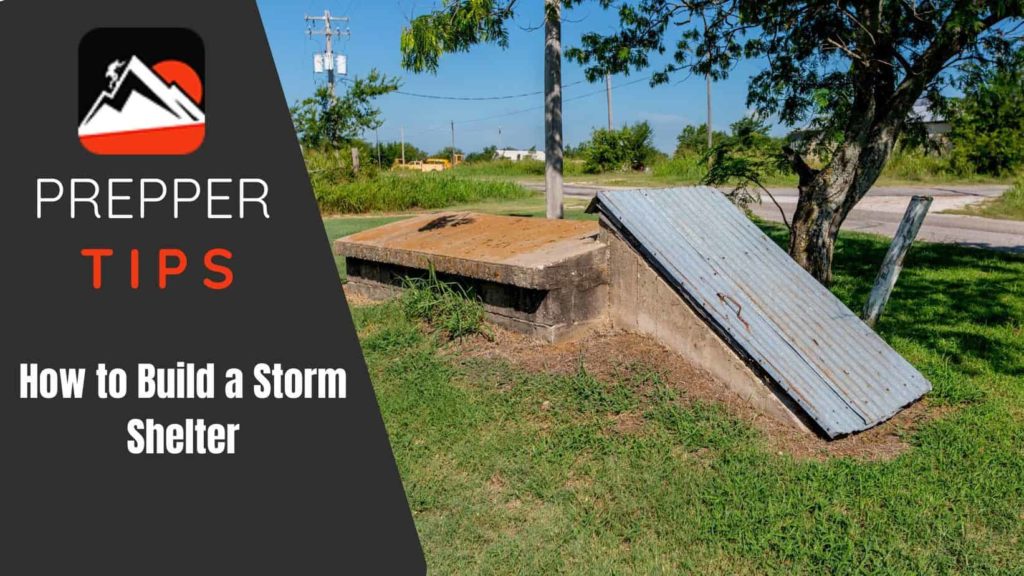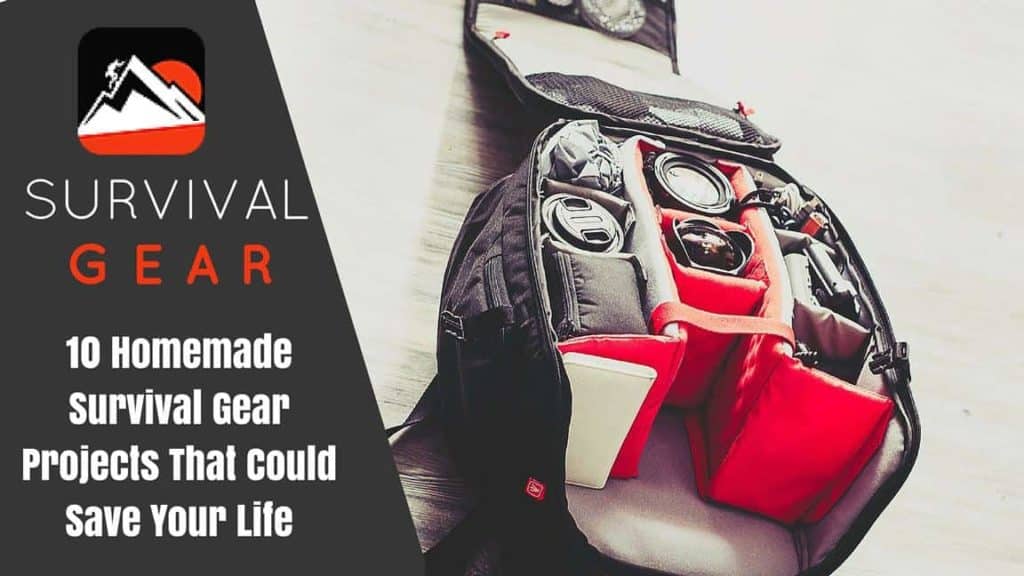Contents
According to the USDA, the 2019 harvest for wheat, soybeans, and other crops were down. A food shortage can happen if the weather patterns continue to be bad. A survival garden is an answer to this problem. You will need to know how to hide the garden, as well as what to plant.
What is a Survival Garden?
A survival garden allows you to grow all the foods you will need to live. Many people say that this means it can only have vegetables in it. This is a very bad way to look at a survival garden.
Flowers and herbs are also edible. With this expanded definition, you can fit a lot more nutrients into a smaller space. Using flowers also makes the garden easier to hide.
Here are the main elements of a survival garden:
- All of the plants must be able to make new ones. You should not have to buy new stock for the next year.
- The plants should be able to grow with no care from you. Choose native plants.
- All of the plants must be edible. Consider “weeds” such as purslane and plantain. These weeds are better for you than spinach. They also grow better in hot weather.
- Some plants should attract bees and other useful bugs. Edible flowers such as marigold, clover, and daisies will help attract them.
- Other plants should repel harmful bugs. Mint and onion work well.
- The food should be easy to store.
Survival Garden Planning
A useful garden is about more than a harvest. You must be able to grow food for as long as you live. It is vital to make plans first. Here are 4 things to think about:
- Calculate calorie and nutrition needs. When you travel, it helps to know how to get where you are going. The same applies to a survival garden.
Each person needs a certain number of calories or “fuel” each day. The more active you are, the more fuel you need. Older adults need less fuel than younger ones. Men need more than women.
There are 4 other things you must eat each day. They are protein, carbohydrates, fat, and minerals. Their amount also depends on age, gender, and activity levels.
This chart shows how many calories and nutrients each day.
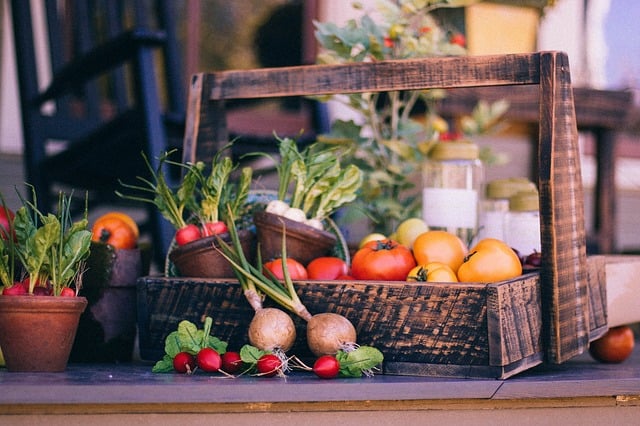
You might also find interesting our article about making aloe vera shampoo at home.
- Choose Nutrient-Dense, High Calorie, Easy to Store Crops. The less space you take up for a garden, the better. This means get just 5 to 10 plant types.
Start with one plant that has a lot of calories. Your second plant must be rich in all 9 essential proteins. Quinoa and soy are your only two options. Next, choose one or two plants high in vitamins.
Any other plants can round out your diet and make the garden easier to manage. Edible flowers and bug repellents go into this category.
The food from each plant should be very easy to store. Plants are sensitive to the seasons. You may only be able to grow food for a few months. After that, you will have to live on the extra set aside. This is why you need to choose plants that are easy to can, or dry well.
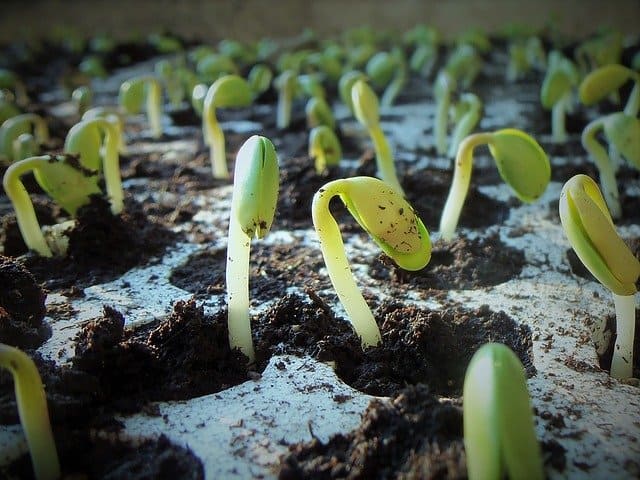
- Use Heirloom Seeds. Seeds from heirloom plants will grow next year. Just remember, though, strains of a plant can mix with each other.
The seeds from these mixes will not grow next year. This is why they are called hybrids. Make sure you choose only one strain of each plant. If you have other strains nearby, there is a chance the pollen will spread.
Once you have heirloom plants, make sure you set a few aside and pollinate them by hand. Other plants in your garden can be open-pollinated.
GMO seeds come from plants that have their genes altered in the lab. The seeds have RNA or DNA that is not normal for them. This includes genes from bacteria. These genes make poisons that kill bugs or other things that harm the plant.
As with hybrid seeds, plants from them may also make seeds. These seeds will not grow next year.
We also recommend reading our article about making powdered milk at home.
Natural Ways to Nurture Your Crops
Each plant needs proper soil pH, nitrogen, and some vitamins. For example, some need iron. Others may need more magnesium and potassium. Here are 3 ways to make sure the soil has what each plant needs:
▪ Hot Composting – When living things die, invisible organisms make the tissue rot. This “rot” breaks down to a point where plants can use it for food.
For example, you can throw kitchen scraps into a bin and leave them there. Do not use meat in the compost bin. The scraps will heat up as they turn into compost.
The temperature in the bin will reach at least 95 degrees. You can bury water pipes under the pile and heat it up.
[embedyt] https://www.youtube.com/watch?v=x4JssQPTYF8[/embedyt]
▪ Vermicomposting – This kind of compost is made when worms eat the scraps. After they digest, the worm casts act as compost. You cannot use vermicomposting bins to heat up water. The temperature does not go high enough.
In both methods, you can dig the compost into the garden. You can also make a “tea” out of it and use it as a leaf fertilizer.
[embedyt] https://www.youtube.com/watch?v=wZ4n8OFOELU[/embedyt]
▪ Free Range Poultry – Chickens produce a lot of waste. You can also use that as fertilizer.
[embedyt] https://www.youtube.com/watch?v=OaDbqPaP3sA[/embedyt]
You might want to also learn about making a knife lanyard with paracord.
Control Pests Naturally
Your garden should be able to stave off bugs and disease without help from you. Here are some ways to control pests without the use of chemicals:
- keep vermin away with mint plants
- grow native plants. They are better adapted to local diseases and pests.
- chrysanthemums and onions repel insects
- attract ladybugs, praying mantis, and lacewings with flowers
- rotate crops every year
- Use companion planting. Choose a plant that is resistant to a disease another type of plant is prone to.
- Make sure there is enough room between plants. Poor air circulation makes the ground too wet. This leads to fungal, mold, and mildew problems.
- Pay attention to soil moisture. For some plants, if the soil is too wet, the roots will rot. If the soil is too dry, the plants will not be strong. Weak plants are more prone to disease.
[embedyt] https://www.youtube.com/watch?v=hXlSicZE9jI[/embedyt]
Water Solutions for Your Survival Garden
Clean water is very important for your garden. If you water the garden every day, there is a chance other people will find it. Delivering and saving water is vital. Here are the steps you can use to capture water and keep it in the garden longer:
- Rainwater Collection. It all starts with getting as much water as possible from other places. The cheapest source will be rainwater. You can use a tarp to capture water. Rain gutters are also a good point of water collection to use.
- Store the Water. You can use barrels for this purpose. Make sure the water has constant circulation to prevent disease.
- Use French Drains to Deliver the Water. Begin by deciding where you will plant. You may have more than one location. Next, dig trenches from the water source to the garden area. Fill these trenches with stones. Cover up the trench. This is a basic French Drain.
You can direct water from a gutter right into the growing area. Or, you can release water from the barrel. The water source should be far enough away that no one will look for your hidden plants.
[embedyt] https://www.youtube.com/watch?v=GRiLhrY2CMc[/embedyt]
Best Vegetables to grow for Survival
Here are 6 plants that should be in your garden:
- Quinoa – Quinoa makes all 9 essential amino acids. That makes it vital for good health if you can’t get meat. Even though it is a tall plant, it is very easy to hide. Quinoa seeds are a big part of bird food. Most people won’t recognize the plant or its value.
Quinoa seeds are also very easy to store. They are also very nutrient-dense and contain a lot of vitamins and protein. One pound of quinoa will make 10 – 11 servings. There is enough carb in each serving for a low to medium carb meal.
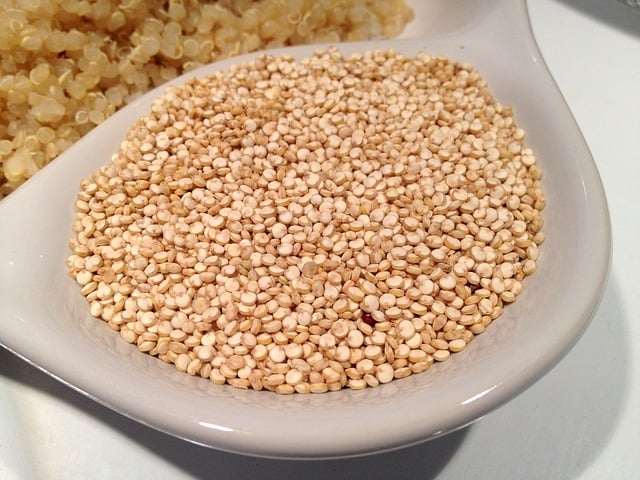
- Plantain – In the US it is considered a weed. People in other parts of the world grow it for salad and side dishes. Plantain is very rich in nutrients and is better for you than spinach.
Plantain is also very easy to grow and hide. It is not a very big plant. You can hide this plant on your front lawn and no one will realize it is food. They will just think you forgot to apply a weed killer to your lawn.
You don’t need to worry much about storage. Plantain grows well indoors and outside. Grow it all year round rather than try to put away extra.
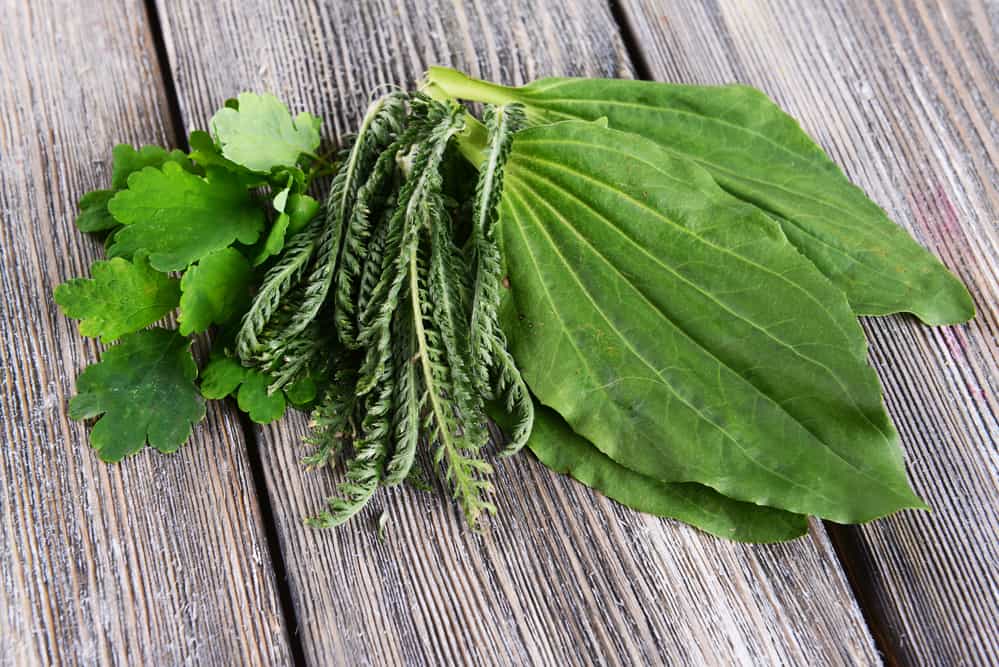
- Sweet Potatoes – Sweet potatoes are better than white potatoes because they have more nutrients. They have about the same amount of carb. Both plants are easy to grow in tubs and bushels.
Sweet potatoes are also better because they grow in hot weather. White potatoes will not make tubers once the soil temperature goes over 80 degrees.
Sweet potatoes are also very easy to store. Just keep them in a cool, dry, dark place. When you are ready to start new plants, just cut one end of the tuber off and plant it. Unlike white potatoes, these do not make eyes.
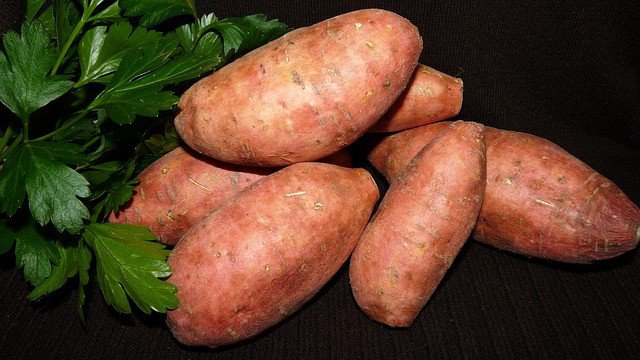
- Beans – You will need to choose pole beans because most bush versions are hybrids.
Soybeans are ideal because it also makes all 9 essential amino acids. The seeds are very good for making milk and tofu.
You can also grow other bean types. Choose darker beans because they have more vitamins and protein. The exception is chickpeas. This plant is very important because you can use it to make flour.
All beans can be dried and stored away. They can also be used to make flour.
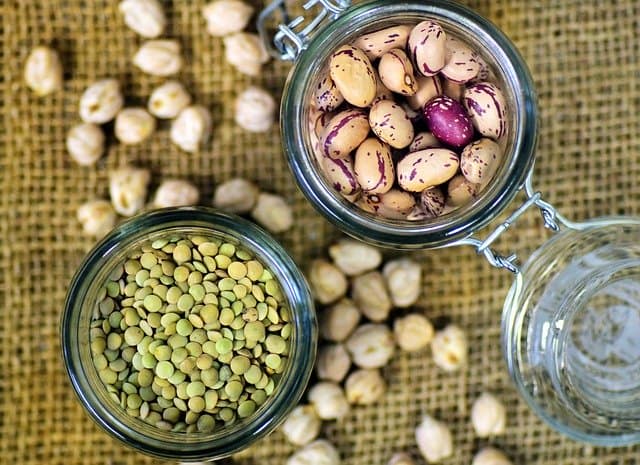
- Sunflowers – You can use the seeds to make butter, oil, and flour. The seeds are also very high in nutrients. They can be ground up and added to any dish.
The leaves, roots, and stems of the sunflower plant can also be used. Some parts have medicinal value.
Sunflower seeds are very easy to store. It is best to keep them in the hull until you are ready to use them.
These plants are easy to recognize. If people see them, they will think other useful plants are nearby. Try to plant smaller edible varieties so they look like they are wild plants.
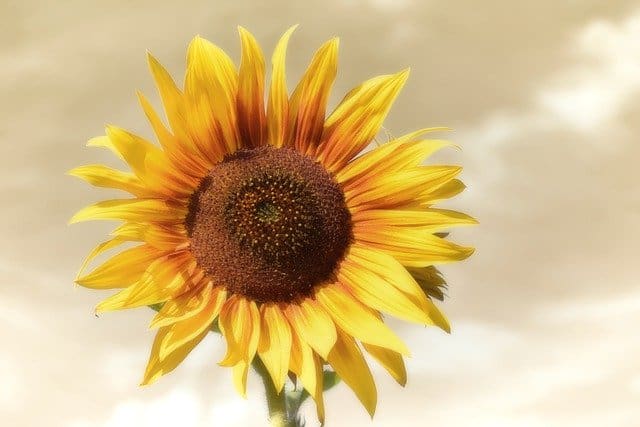
- Zucchini – The benefits of growing this plant are almost endless. It is a nutrient-dense food but has few carbs. This makes it very helpful for people with diabetes.
One plant can produce squash all year round. Just take the plant indoors when it gets cold.
Zucchini seeds and flowers are also edible. It can also be used to make flour.
You may also want to grow winter squash such as acorn and butternut. Just bear in mind these plants take longer to grow.
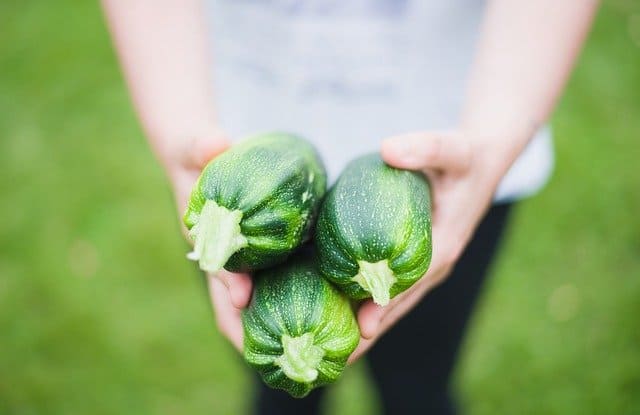
How to Camouflage your Survival Garden
- Natural Defense Covers. Hiding plants can be hard because they need light to grow. Similarly, fences or netting will alert others that something valuable is there.
Instead, you can use some tools provided by nature. Wild roses make thorns, as do other plants. You can surround each plot with them and take advantage of the flowers as well. Plants with thorns also keep out animals.
Poison Ivy, sumac, and similar plants can also be used as a barrier. Just make sure the leaves are far enough away so they do not touch your plants. You will also have to figure out how to make your way through the barrier.
You can also try to attract animals that will deter people. This includes snakes and spiders. Try to choose non-venomous snakes. Many of them do look like poison ones, so they can still act as a deterrent.
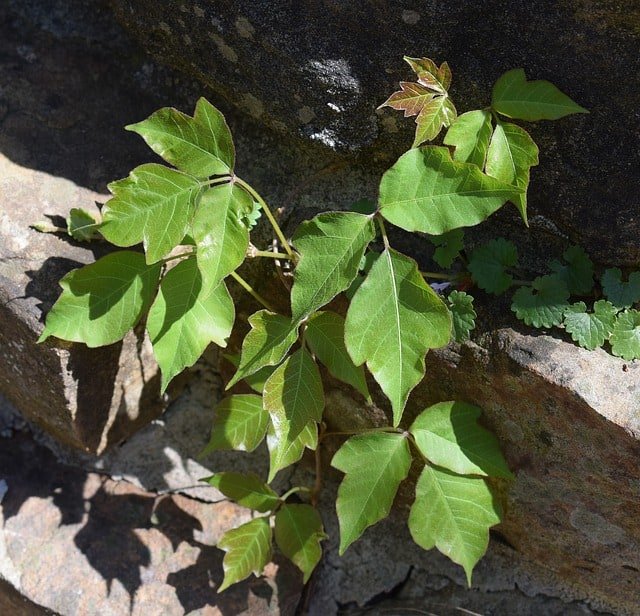
- Edible Landscape. Have you ever heard of hiding in plain sight? If so, then you already know how to hide your survival garden. All you have to do is make the plants look like they aren’t a garden.
One of the easiest things to do is choose plants that don’t look like food crops. If you have wild quinoa growing in your area, consider adding a few more plants for yourself.
Similarly, plantain and other weeds can grow right on your front lawn and no one will be the wise.
If you are using more conventional plants, never put them in rows. Study how plants grow around trees. You can duplicate that pattern.
Mix important plants with wildflowers to hide them. This will work well with low growing vines such as sweet potato. You can also grow beans near crawling ivy plants.
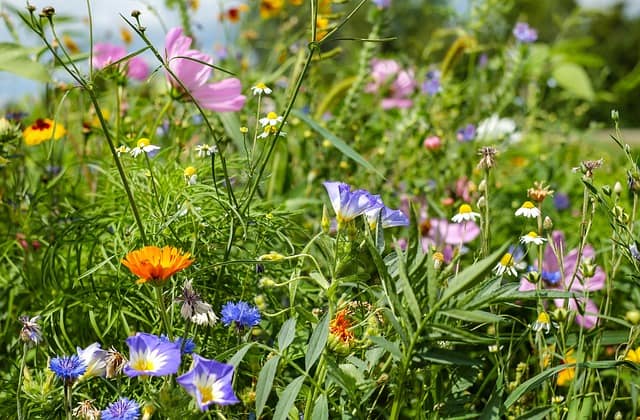
- Use Several Locations. Never put your entire garden in one place. It is best to have a few plants here and there. This way, even if people find one set of plants, they may not find the rest.
It also helps to choose locations that no one would bother to look in. If the plants can take it, choose shady areas deep in the middle of trees.
Use different plants in each location. For example, if you have one sunny spot, put just 1 or 2 types of plants. In the next location, choose different plants.
You also need to limit the number of plants in each location. Pay attention to how native plants grow. Let’s say you only see 5 or 6 of a plant type in a patch. Only put the same amount of the plant of interest in that location.
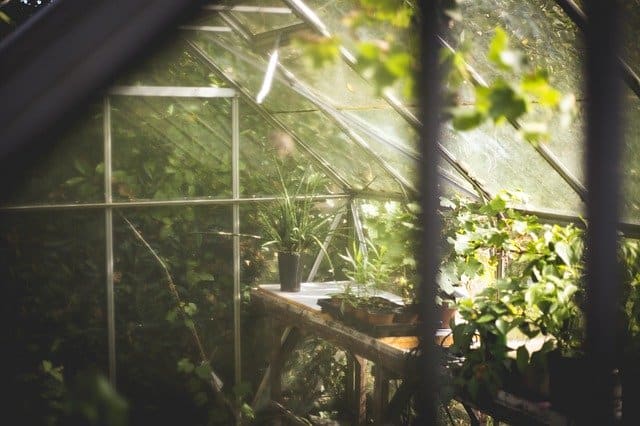
Use Permaculture
This world has been filled with plants for a long time. Even though it all looks random to us, there are patterns in nature. Plants do not do well by accident.
It isn’t just about where seeds land. Permaculture is about how each plant works in the setting. This includes how the plant interacts with animals and bugs. For example, some plants produce extra leaves for animals to eat. That is in exchange for their seeds being carried further away.
If you pay attention, nature will teach you many things. You can apply these lessons to your survival garden. Here are some things you should look for:
- How do native plants manage water? Unless you are in the tropics, water shortages will happen. If you pay attention to the local plants, you may find they shed a lot of leaves. These leaves may also stay around the base of the plant.
To replicate, you can use dried leaves as a ground cover to hold moisture in the soil.
- Think about other weather patterns. Do you see other adaptions? Are the plants wrapping around trees? What about deeper root systems? If the plants you are growing don’t have these adaptions, you will have to provide an alternative.
[embedyt] https://www.youtube.com/watch?v=0mwRAf3z9ag[/embedyt]
No Land? Consider Aquaponics or Hydroponics
You will need several acres of land for a survival garden. You may not have that much, or any land. Or, you may have enough land, but cannot grow anything on it. Here are some things to try:
- This system uses very little soil. Instead, the roots of plants are bathed in water from fish tanks. The waste from the fish is a useful fertilizer.
You can grow plants in an aquaponics system very close together. Many people plant them one tray over another. Disease can happen very fast because of the moisture and lack of airflow.
Some plants grow better this way than others. Potatoes and other tubers won’t do well. Plantain and squash will grow like crazy. Sunflowers and quinoa will grow, but they still need a lot of room.
- Unlike aquaponics, the nutrient solution is not made up of fish waste. You will have to buy commercial mixes or figure out how to make your own.
Plants in this system are also grown very close to each other. You still have to disinfect everything to avoid disease. Airflow is also a huge problem.
[embedyt] https://www.youtube.com/watch?v=_ewOsgoGQL4[/embedyt]
Conclusion
Once crops fail, it will be too late to buy food or start your own garden. Now is the time to make sure you have enough food to live on. A survival garden can help you achieve this goal now and in the years to come.
Choosing the right plants is very important. You must also take care when setting up the growing area. Take your time with this process. After you harvest your first crop, you will wish you had started this kind of garden much sooner.

